International Boundary Lines in the World 2025: Important Borders, Lines, & Geopolitical Significance – Explore key global boundaries like the Radcliffe Line, McMahon Line, and 38th Parallel with their historical background and strategic importance.
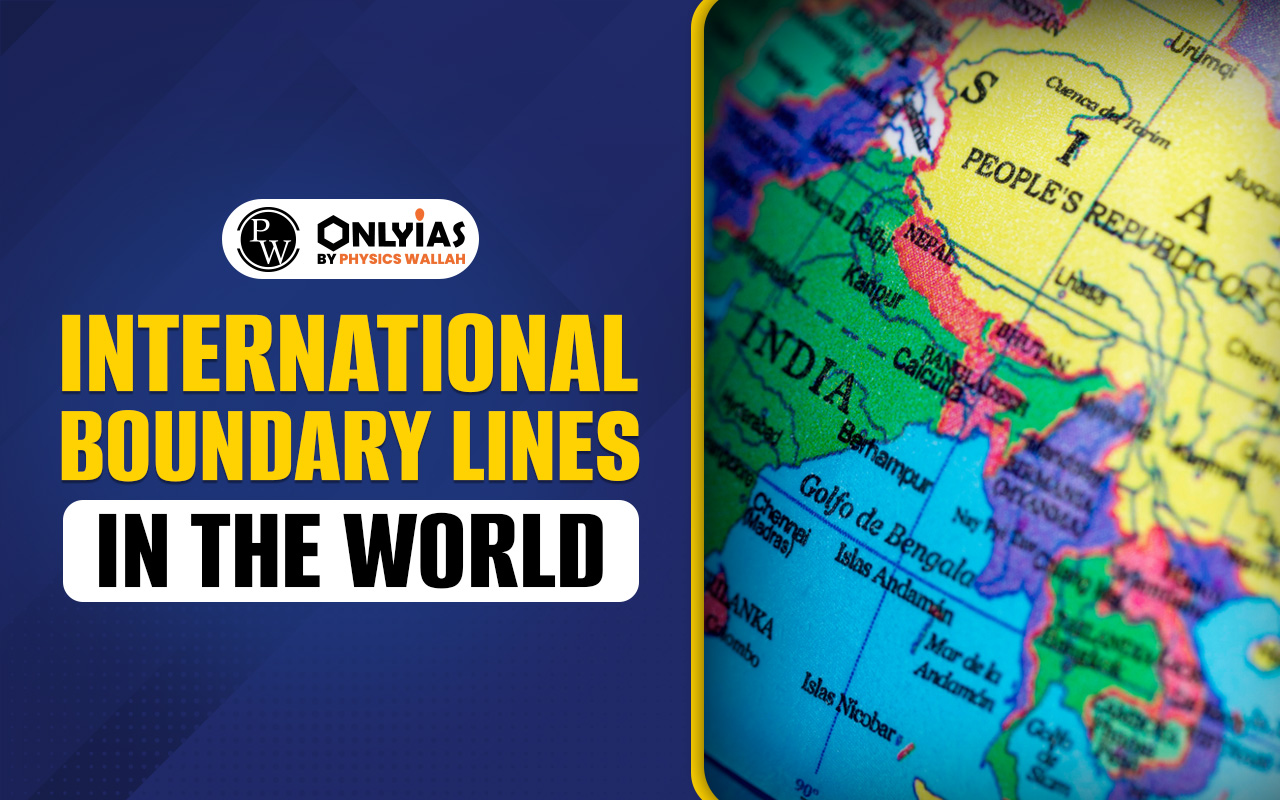
International Boundary Lines in the World 2025: International boundaries, serving as geographical borders between political and legal jurisdictions such as countries, customs territories, and sovereign states, are a crucial topic for UPSC aspirants studying the Geography Syllabus. This comprehensive guide aims to provide UPSC aspirants with a detailed understanding of international boundaries, their significance, and key boundary lines worldwide.
International boundaries are the demarcations that separate two sovereign countries, defining their territories and legal jurisdictions. The process of creating these borders is known as boundary delimitation. While some international borders, like those within the European Union, are thinly guarded or open, others, such as the India-Pakistan and North Korea-South Korea borders, are heavily patrolled with access controlled through designated crossings. International boundary lines represent the space between two sovereign countries and are crucial in delineating territories. They establish the authority of a single national government within its borders. While these boundaries resolve land possession disputes, some have been the cause of wars.
The important boundary lines of India and the world include the 49th Parallel Line, McMahon Line, Maginot Line, and Radcliffe Line. The 49th Parallel Line separates Northern USA and Canada, the Maginot Line marks the border between Germany and France, and the McMahon Line defines the boundary between China and India. Among the notable boundary lines globally, several play a significant role in shaping geopolitics and international relations. Some of the important boundary lines are:
|
Important International Boundary Lines |
||
| Name of Line/Boundary | Between | Features/Description |
| 17th Parallel | South Vietnam and North Vietnam | Divided erstwhile North and South Vietnam based on the 1954 Geneva Accords. Became irrelevant after Vietnam’s unification. |
| 20th Parallel | Libya and Sudan | Marks the border between Sudan and Libya. |
| 22nd Parallel | Egypt and Sudan | The 22nd latitude north marks a major portion of the Sudan-Egypt border. |
| 25th Parallel | Mauritania and Mali | Marks the northernmost section of the Mali-Mauritania border. |
| 31st Parallel | Iran and Iraq | Marks the border between Iraq and Iran and also between the US states of Louisiana and Mississippi. |
| 38th Parallel | South Korea and North Korea | Demarcates the central part of the Demilitarized Zone between North and South Korea. |
| 49th Parallel | The USA and Canada | Forms the international border between the northern USA (excluding Alaska) and Canada. |
| Durand Line | Pakistan and Afghanistan | Delimited by Sir Mortimer Durand in 1893 but not recognized by present-day Afghanistan. |
| Hindenburg Line | Poland and Germany | A defensive line in French territory during World War I, rendered irrelevant by the Treaty of Versailles in 1919. |
| McMahon Line | China and India | De facto border between India and China, although China disputes its legal status. |
| Maginot Line | Germany and France | A defensive line on the French border towards Germany before World War II, rendered obsolete by the German invasion. |
| Mannerheim Line | Russia and Finland | A defensive line against the Soviet Union during World War II. |
| Oder-Neisse Line | Poland and Germany | Demarcates the Polish-German border according to the Potsdam Conference, recognized by unified Germany in 1990. |
| Radcliffe Line | India and Pakistan | Demarcated for the Partition of India and the formation of East and West Pakistan, including present-day India, Bangladesh, and Pakistan. |
| Siegfried Line | France and Germany | An extension of the Hindenburg defensive line on the western front of World War I. |
| Blue Line | Lebanon and Israel | A border demarcation between Lebanon and Israel established by the United Nations. |
| Green Line / UN Buffer Zone | The Republic of Cyprus and Turkish Cyprus | A demilitarized zone patrolled by the United Nations Peacekeeping Force in Cyprus (UNFICYP) established after the ceasefire in 1974. |
India shares multiple important international boundary lines, many of which are historically and politically significant. These boundary lines demarcate India’s territorial limits with neighboring countries and include well-known lines such as the McMahon Line and the Radcliffe Line. Some of these lines are formally recognized, while others are disputed. Below is a table summarizing key boundary lines with their lengths.
| International Boundary Lines of India with Distance | ||
|---|---|---|
| Boundary Line | Description | Length (km) |
| McMahon Line | Proposed in 1914 by Lt Col Sir Arthur Henry McMahon, it separates Tibet and north-east India; accepted by India but disputed by China. | 890 |
| Radcliffe Line | Divides India and Pakistan, drawn in 1947 by Sir Cyril Radcliffe during Partition, separating West Pakistan & India and India & East Pakistan (now Bangladesh). | 3223 |
| Durand Line | Demarcated in 1896 by Sir Mortimer Durand, separates British India and Afghanistan; Pakistan inherited most of this line post-Partition; India shares a small section with Afghanistan in Jammu & Kashmir. | 2640 |
| Line of Actual Control (LAC) | Demarcation line separating Indian- and Chinese-controlled territories in Jammu & Kashmir area; not a formal international boundary. | Not fixed |
| Line of Control (LOC) | Military-controlled ceasefire line between India and Pakistan in Jammu & Kashmir; not a formal international boundary. | Not fixed |
India shares its international borders with seven neighboring countries, and two of the most significant boundary lines are the Radcliffe Line and the McMahon Line. These boundary lines hold particular importance for specific reasons, which are elaborated below for a deeper understanding.
1. Radcliffe Line – International Boundary between India and Pakistan
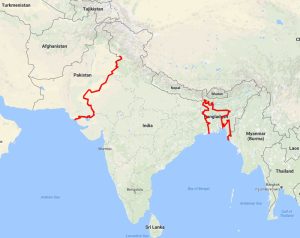
The Radcliffe Line, also known as the international boundary line between Pakistan and India, runs from Gujarat to the Jammu and Kashmir (J&K) border. It was created on August 17, 1947, and played a pivotal role in the partition of British India into three parts – India, West Pakistan, and East Pakistan (now present-day Bangladesh). The borderline between India and Pakistan also passes through the Jammu and Kashmir region, where it is referred to as the Line of Control (LOC).
2. McMahon Line – Boundary Line between India and China
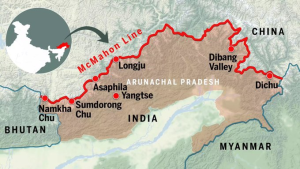
The McMahon Line serves as the international boundary line between India and China, extending from the eastern border of Bhutan to the Himalayas until it reaches the great bend in the Brahmaputra River. Named after Sir Henry McMahon, the former foreign secretary of British India, this boundary line was established through a bilateral agreement signed between Tibet and Britain at a conference in Shimla on July 3, 1914. The McMahon Line stretches approximately 890 km or 550 miles in length, marking a significant border between India and China.
3. Line of Actual Control (LAC)
The Line of Actual Control (LAC) acts as the de facto borderline between India and China. Initially, it began as a ceasefire line, but it later evolved into an informal boundary separating the territories of China and India. The LAC is not a precisely defined boundary, leading to occasional disputes and tensions between the two neighboring countries.
Out of all the international boundaries, few are more significant than others due to different characteristics. Some of the important international boundaries are listed below.
| No. | International Boundary Line | Description |
| 1 | United States-Mexico Border | One of the busiest borders worldwide, serving as a vital gateway for trade and migration. |
| 2 | India-Pakistan Border | Heavily militarized and witnessed several conflicts, including the Indo-Pakistani Wars. |
| 3 | North Korea-South Korea Border | Highly fortified Demilitarized Zone (DMZ) symbolizing ongoing tensions between the nations. |
| 4 | China-India Border | Disputed in several areas, leading to border conflicts and territorial disputes. |
| 5 | Canada-United States Border | World’s longest international border, facilitating trade and cultural exchange. |
| 6 | Germany-Poland Border | A complex history with conflicts, notably during World War II. |
| 7 | Israel-Palestine Border | Highly contested, a major source of conflict in the region. |
| 8 | Spain-Morocco Border | Important gateway for migration from Africa to Europe, subject to contention. |
| 9 | Arctic Circle | Marks the planet’s northernmost point, crucial for climate change and Arctic relations. |
| 10 | English Channel | Separates England from France, significant for trade, tourism, and migration. |
| 11 | Panama Canal | An essential maritime trade route connecting the Atlantic and Pacific Oceans. |
| 12 | Rio Grande | Serves as a natural border between the United States and Mexico, a vital water source. |
The Hindenburg Line was a formidable German defensive system established during World War I. Extending from northern France to Belgium, it served as a critical barrier shielding Germany’s western front. Constructed between 1916 and 1917, the line featured intricate fortifications including concrete bunkers, deep trenches, and natural geographic defences like rivers and elevations. It was designed to halt Allied advances and buy time for Germany to reorganise its military efforts. Despite its strength, the line was ultimately breached during the Allied offensive in 1918, notably in the Battle of Amiens, signalling a turning point in the war.
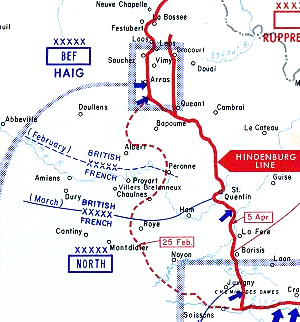
The Durand Line is a historically significant but politically sensitive boundary demarcating the border between modern-day Pakistan and Afghanistan. It was established in 1893 through an agreement between Sir Mortimer Durand of British India and Afghan Amir Abdur Rahman Khan. Intended to delineate spheres of influence between British India and Afghanistan, the line runs for approximately 2,670 kilometres. While Pakistan considers it an official international boundary, Afghanistan has consistently disputed its legitimacy, arguing it divides ethnic Pashtun communities and lacks mutual consent in the post-colonial context.
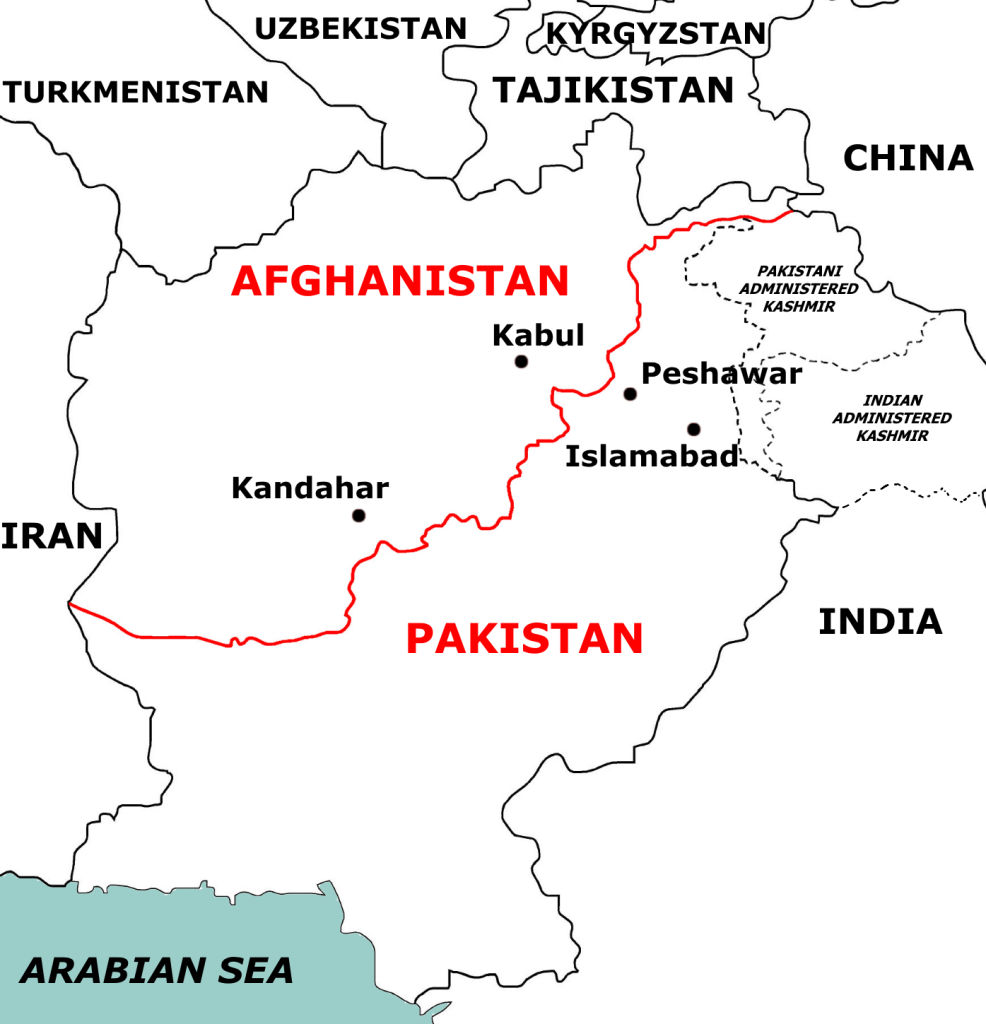
1. Highest International Boundary: The border between Nepal and China, running across the top point of Mount Everest at 8848 meters (29029 feet) above sea level.
2. Longest International Boundary: The 5525-mile-long border between Canada and the United States; the longest undefended border in the world.
3. Most Lit-up International Boundary Line: The Radcliffe Line, bordering India and Pakistan, as captured in a NASA snapshot from the International Space Station.
4. Most Guarded International Boundary Line: The Korean Demilitarized Zone (DMZ) between South and North Korea, approximately 250 km long and 4 km wide.
Ready to boost your UPSC 2026 preparation? Join PW’s UPSC online courses today!
The most significant international boundary lines in the world are The Radcliffe Line, The Hindenburg Line, The Durand Line, and The McMahon Line.
India shares its international borders with seven neighboring countries: Pakistan, China, Nepal, Bhutan, Bangladesh, Myanmar, and Afghanistan. These borders define India's territorial boundaries and geopolitical relations.
An international boundary line is a geographical border that separates the territories of two sovereign countries or legal jurisdictions, defining their respective areas and marking the extent of their authority.
The line that separates India and China is called the McMahon Line. It stretches across the eastern border of Bhutan to the Himalayas and is named after Sir Henry McMahon, the foreign secretary in British India, who proposed it as a boundary line during the Shimla Conference in 1914.
The line between India and Bangladesh is called the Radcliffe Line. It was named after Sir Cyril Radcliffe, the British lawyer who was tasked with the demarcation of the boundary between India and Pakistan during the Partition of British India in 1947. The Radcliffe Line divided the provinces of Bengal and Punjab and resulted in the creation of East Pakistan (now Bangladesh) and West Pakistan (now Pakistan).
The name of the border line between India and Pakistan is the Radcliffe Line. The Radcliffe Line divided the provinces of Punjab and Bengal and led to the formation of India and Pakistan as separate nations.
The line between India and Afghanistan is known as the Durand Line. It was established in 1893 through an agreement between Sir Mortimer Durand, representing British India, and the Amir of Afghanistan. The Durand Line serves as the international boundary between the two countries in South Asia. However, it has been a subject of controversy and disputes between Pakistan (successor state to British India) and Afghanistan since Pakistan's independence.
The Kali River, also known as the Mahakali River, forms the natural boundary between India and Nepal in the Kalapani region.

<div class="new-fform">
</div>